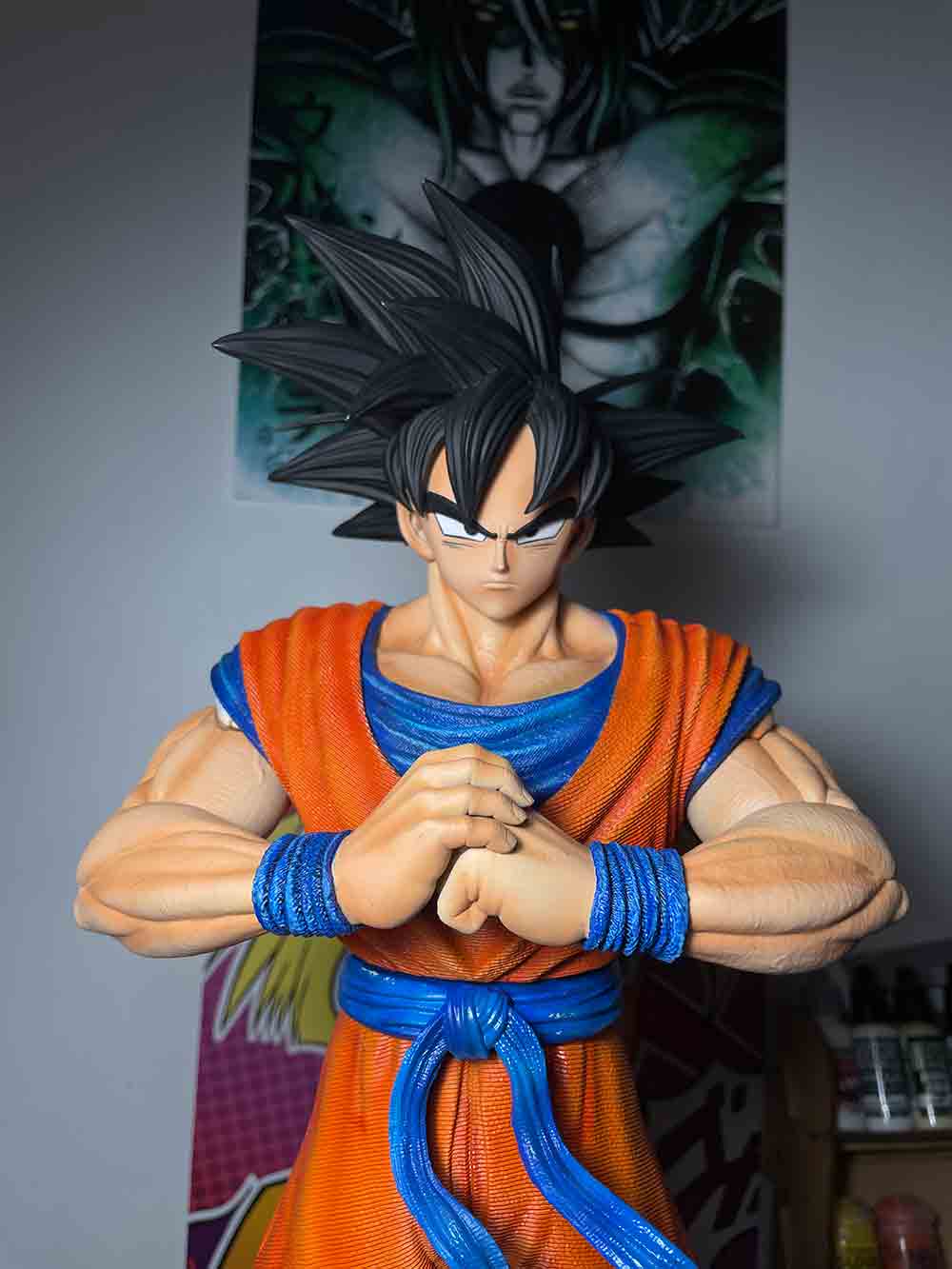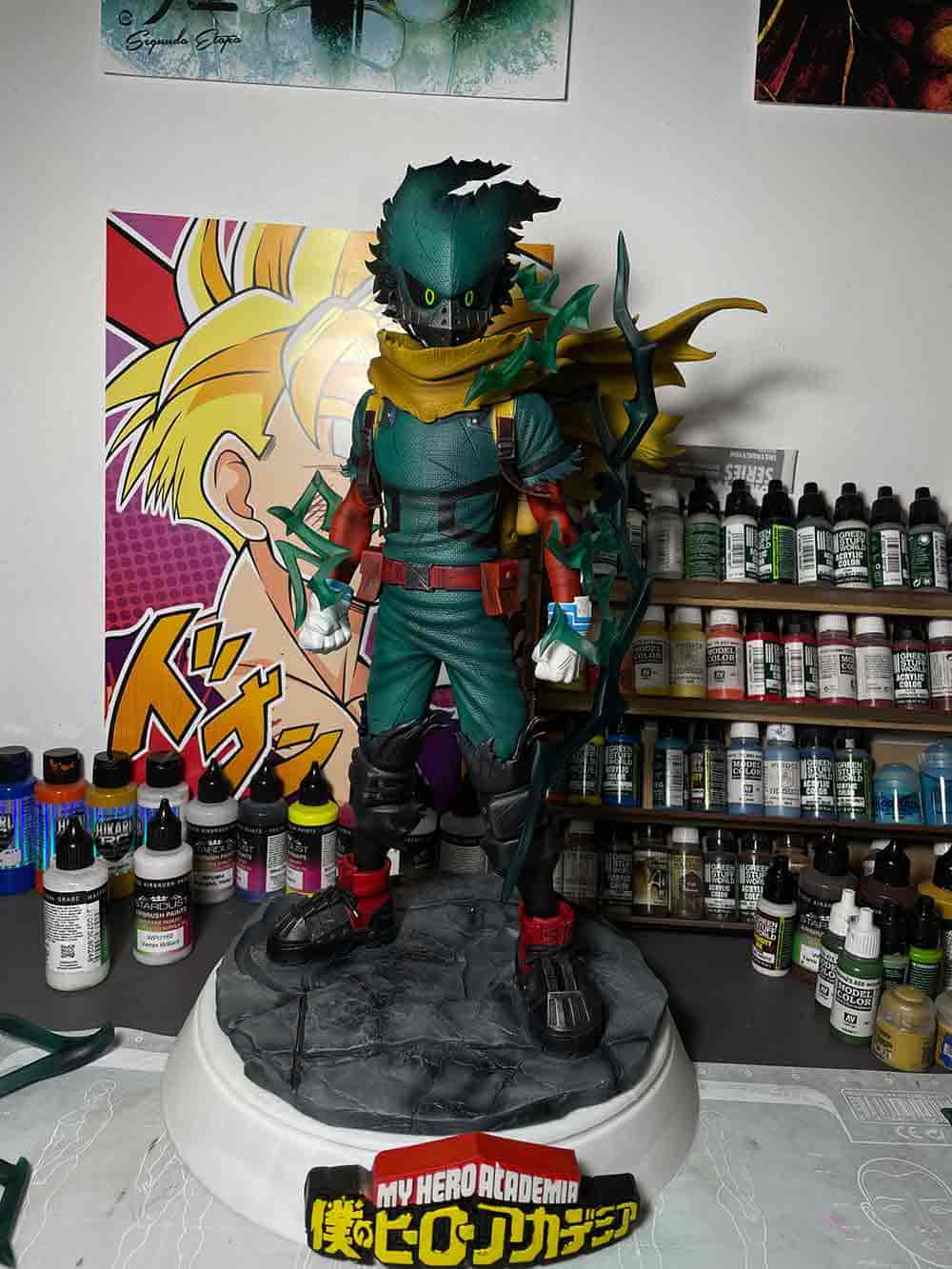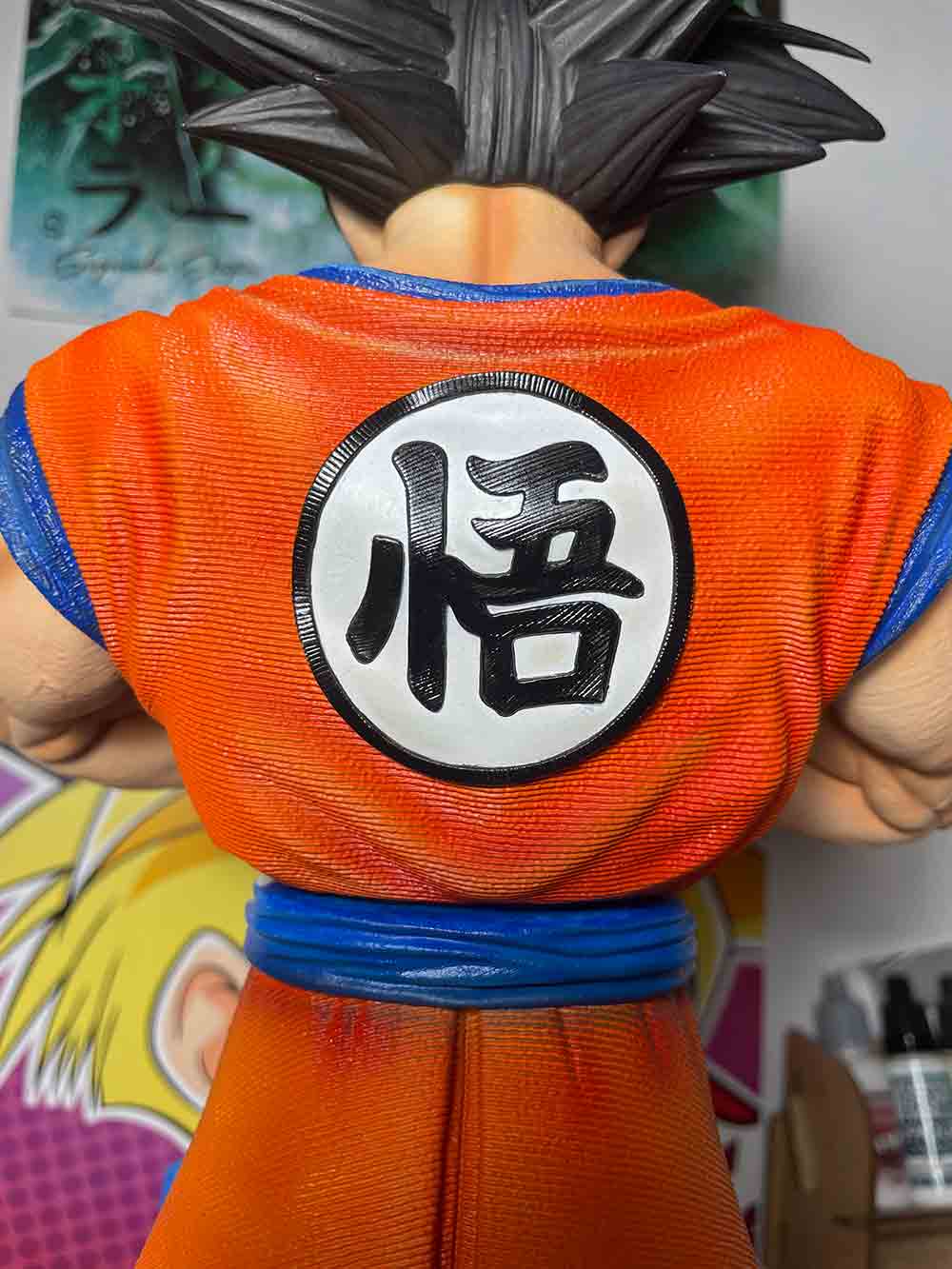The painting process and 3D printing using photo-polymerized resin
Now let’s look at the second category of printers: resin printers!
Resin 3D printing uses a technique called photo-polymerization to create 3D objects from a digital model: Liquid resin is poured into a tank of the 3D printer, a printing platform is positioned above the resin and a UV light source is used to cure the resin in successive layers, creating the 3D object. This technique is called photopolymerization.
Generally, resin printers have an LCD screen and a 365nm ultra violet light source. The resin used hardens in UV rays (and therefore also in the sun)! The LCD screen placed under the resin tank separated by an FEP film will display the shapes layer by layer to harden in order to create all the details of the 3D model.
The liquid resin used in 3D printing is generally presented in bottles of 500ml/1L or more, opaque black to prevent the sun's rays from hardening the resin.
Similar to FDM printing, the user must provide the printer with a specific file in the format suitable for the printer and each printer has its own file extension. For example, a print file for an Anycubic Mono X will end with “.pmx”.
Slicer for resin printer
Just like for FDM printing, there are also many slicers for resin printing, the best known however remains “Chitubox”! For my part, I started with “Lychee Slicer”, and I got so used to this slicer that I only use it, in addition to “Chitubox” because some printers are not yet available on “Lychee”.
The slicers for resin printers are similar and have the same use as those for FDM printing. This is where you will determine the size, orientation, position of your parts but also define all of your printing parameters (speed, exposure time, etc.) and also choose to dig or not your parts and add supports. There are many things to discover about slicers but that is not the aim of this article.
Instead, let’s see what it’s possible to do with a resin printer!
Resin printing also has many applications since it is even used in medicine, jewelry, aerospace, automobiles, etc. Here, I will present to you the most common uses among most individuals who own a resin printer:
Collectible figurines by resin printing
The most common use is undoubtedly the creation of collectible figurines! Resin is widely used in the world of figurines, particularly high-end figurines. Some studios also use 3D resin printing to create their prototypes and their parts which will then be molded to make several thousand copies!
It is therefore no great surprise that making figurines is the most widespread use of 3D printing!
Personally, I exclusively use my resin printers to create figurines from my favorite manga, comics, and video games! Here are some examples of figurines that I made myself in 3D printing:

Table Top Figurines
Another very common application, which is closely linked to the first, is the creation of miniature pieces/figurines for board games (e.g. Warhammer).
Here we are not dealing with large or medium-sized collectible figurines but with miniatures intended to be used in games and therefore often manipulated.
Some players prefer to make their own figurines rather than buying kits to build and paint because it allows them to make big savings and have a very wide choice of models.
Due to its speed and precision, which allows all the details of the figurines to be brought out, 3D resin printing is widely used in this field!

Cosplay with resin print
It is not surprising to find this application again since it is one of the most common in the field of 3D printing! Resin, although more fragile than filament, will still find its place in the world of cosplay for its precision and diversity of products.
For example, we will find transparent resin which will often be used in cosplay. Very fine and very detailed parts that require high precision, such as helmet blinders, will also be made in resin!
Some people even make masks entirely out of resin like Oni masks!
Of course, as I said previously, there are still multitudes of applications for resin printing, I have decided here to present to you only those that I know of and which in my opinion are the most widespread among individuals/ amateurs/enthusiasts!
At this stage of reading, you know the difference between resin printers and FDM printers, you know in broad terms how it works and what you can do with it. Now let's see if you want to start 3D printing, which is better to choose: FDM printer or resin printer?
FDM VS Resin, which paint for 3D figurine to choose?
Which paint for 3D printing?
How to paint a 3D print?
Choosing acrylic paints for 3D printing
FDM (Fused Deposition Modeling) printing




















































































